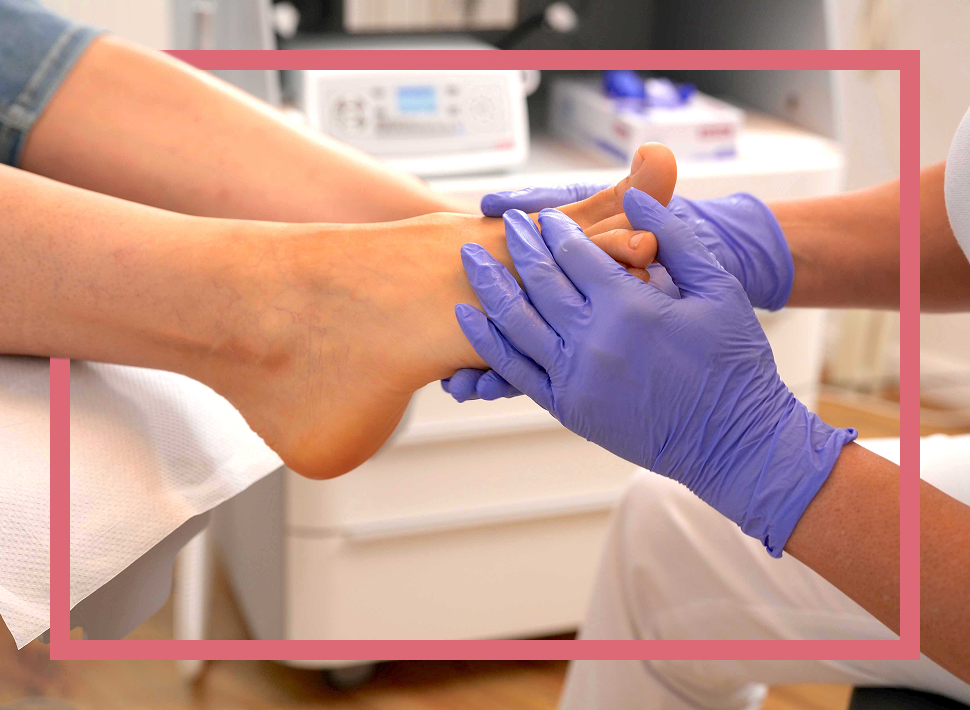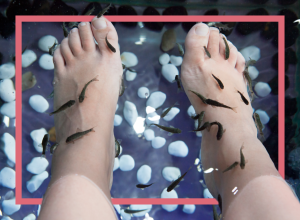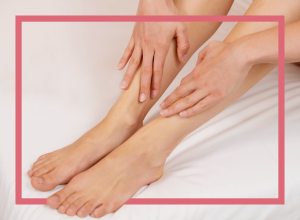Cracks between the toes are not only unpleasant, but can also easily become infected – especially if they remain moist or are overlooked. But a fungus is not always the cause. Here you can find out what the causes can be, how to recognize cracked skin between your toes – and which home remedies or care products you can use to provide targeted support.
Why cracks between the toes are so common
The skin between the toes is particularly sensitive – tight-fitting, often moist and subject to mechanical stress. So it’s no wonder that small cracks, tightness or even inflamed areas often occur here.
Such cracks do not only occur in active athletes or people with sensitive skin. Seniors or diabetics also have to deal with cracked skin between their toes more frequently – not least because blood circulation, moisture balance or the skin microbiome can change with age.
Many sufferers automatically assume that the symptoms are caused by athlete’s foot. However, in many cases the cause is quite different: shoes that are too tight (a common
Typical causes of cracks between the toes
Cracks between the toes are usually caused by a combination of moisture, friction and incorrect care. The most common triggers include:
- Excessive moisture: Sweating in closed shoes, insufficient drying after showering or synthetic socks promote a softened skin environment.
- Dry skin & lack of care: If you don’t regularly moisturize your skin, you risk tension and fine cracks – especially in the sensitive areas between your toes.
- Friction & pressure: Tight shoes or misalignments lead to the skin between the toes constantly rubbing against each other – which can cause irritation and micro-injuries.
- Care products with irritating ingredients: Certain shower gels or ointments can weaken the skin barrier – especially for sensitive skin.
- Skin infections – but not always a fungus: in some cases, athlete’s foot is actually the cause. However, those who suffer from cracks between their toes without a fungus often simply have a care problem or a mechanical cause.
Symptoms & differentiation from athlete’s foot
Not all cracks are the same – and not every skin change between the toes automatically indicates a fungal infection. Typical characteristics of non-fungal cracks are
- Dry, taut skin with small tears
- No scaling, no pronounced itching
- Clear edge, no soft, whitish areas of skin
- Irritation or burning on contact with water or care products
In contrast, athlete’s foot often manifests itself with the following signs:
- Soft, whitish, swollen skin between the toes
- Severe itching, scaling or weeping areas
- Often accompanied by redness or unpleasant odor
Uncertainties are not unusual. If the symptoms do not improve despite care, a medical examination is advisable – especially in the case of chronic or painful tears, or if there is a pre-existing condition such as diabetes.
Treating cracks between the toes: What really helps?
If the skin between the toes tears, gentle but consistent care is essential. The aim is to soothe the affected area, protect it from infection and support skin regeneration. The following measures can help:
- Gentle cleansing: Use lukewarm water and pH-neutral, skin-friendly cleansing products. Aggressive soaps can also dry out the skin.
- Careful drying: Dry the spaces between your toes thoroughly after washing – preferably with a soft towel or cosmetic tissue.
- Moisturizing care: Apply a light, non-greasy foot care cream regularly. Products with regenerating active ingredients such as the microalgae active ingredient Spiralin® can specifically support the skin barrier.
- Protection against germs: If the skin is already cracked, care products with an antimicrobial effect are recommended – e.g. Spirularin® HF Gel. It forms a gentle protective film and supports natural regeneration.
Cracks between the toes – home remedies & everyday tips
In addition to traditional skin care, simple home remedies can also be helpful to soothe irritated skin and improve the skin’s climate:
- Coconut oil: Has a slightly antibacterial effect and moisturizes – ideal for care after washing.
- Black tea compresses: The tannins they contain have an astringent effect and can have an anti-inflammatory effect.
- Camomile: In the form of foot baths, it can soothe the skin – especially if it feels tight or is slightly inflamed.
- Cotton socks & breathable shoes: These promote a dry foot climate and prevent additional sweating.
- Regular shoe changes & ventilation: Avoid damp indoor spaces in shoes – this promotes a healthy skin environment between the toes.
Please note: Home remedies are no substitute for targeted care for open or severely irritated areas of skin. However, they can have a supportive effect – especially in combination with medically tested products.
When medical advice makes sense
If there is no improvement despite care, medical advice is required. This applies in particular to
- Inflammation, oozing or pus formation
- persistent pain or walking disorders
- Pre-existing conditions such as diabetes or neurodermatitis
Conclusion
Cracks between the toes are common – but easy to manage. Those who pay attention to hygiene,
FAQ
What causes cracks between the toes?
Common triggers for cracks between the toes are too much moisture in the spaces between the toes, friction from tight shoes or seams, athlete’s foot and sensitive or dry skin. Prolonged foot bathing, heavy sweating, synthetic socks without moisture management and insufficient drying after showering also encourage fine cracks.
First aid for painful tears?
Rinse the affected area briefly with lukewarm water and a mild, pH-neutral cleanser and then dry very carefully, including the edges of the cracks. Apply a
How can I recognize athlete’s foot in the interdigital spaces?
Typical symptoms are itching, whitening or scaling, sometimes oozing and an unpleasant odor.
When should I see a doctor?
Seek medical advice if there is pus, severe pain, redness/warmth, pronounced swelling, no improvement after 1-2 weeks, recurring cracks or if there are diabetes, circulatory or nerve problems. Early clarification is also advisable in the case of unclear skin changes.
Experten-Tipp entstand in Zusammenarbeit mit:
Patrick Günther
Patrick Günther completed his pharmacy studies in Hamburg and, after obtaining his licence to practise, worked for several years in marketing and sales in the pharmaceutical industry. In 2003, he took over ocean pharma, the company founded by his father in Reinbek near Hamburg in 1978. Together with his business partner, he patented the important processing and standardisation process for the microalgae active ingredient Spiralin® and developed a wide range of medical cosmetics and foot care products based on Spiralin®.







